Employee Offboarding Checklist
When an employee quits the company due to resignation, layoffs, or other circumstances, the HR department must finish several tasks. Let’s discuss below.
Introduction To Employee Offboarding Checklist In Human Resource
Employee offboarding is a critical process within Human Resources (HR) management that involves smoothly transitioning employees out of an organization when they leave their positions. Whether an employee resigns, retires, or is terminated, offboarding ensures that their departure is handled professionally, respectfully, and in compliance with company policies and legal regulations.
A well-structured Employee offboarding checklist is essential for HR departments to manage this process efficiently and effectively. This checklist serves as a roadmap, guiding HR professionals through the necessary steps to wrap up the departing employee’s tenure and ensure a seamless transition for both the individual and the organization.
Onboarding Vs. Offboarding
Onboarding and offboarding are two important processes within human resources management, particularly in the context of employee lifecycle management:
Onboarding: Onboarding refers to the process of integrating a new employee into the organization and its culture. It begins from the moment the employee accepts the job offer and continues through their first few weeks or months on the job. The primary goals of new hire onboarding checklist are to:
1)Acquaint the new employee with the company’s mission, values, and culture.
2)Provide necessary training and resources for the new employee to perform their job effectively.
3)Introduce the new employee to their team members, managers, and other relevant stakeholders.
4)Ensure that the new employee feels welcome, supported, and engaged.
Offboarding: Offboarding, on the other hand, is the process of managing an employee’s departure from the organization. It typically begins when an employee resigns, retires, or is terminated and continues until their last day of employment. The main objectives of offboarding are to:
1)Facilitate a smooth transition for the departing employee, ensuring that they leave the organization on good terms.
2)Complete any necessary administrative tasks, such as collecting company property, returning access badges, and conducting exit interviews.
3)Communicate the departure to the rest of the team and ensure that work responsibilities are appropriately reassigned or transitioned.
4)Provide support and assistance to the departing employee, such as guidance on benefits continuation, COBRA, or other post-employment matters.
Types of Elements in Employee Offboarding Checklist
Employee offboarding checklists typically include various elements to ensure a smooth transition for departing employees and to safeguard company assets and data. Here are some common types of elements you might find in an employee offboarding checklist:
Documentation and Paperwork:
1)Exit interview documentation.
2)Return of company property (laptop, keys, ID badges, etc.).
3)Signed non-disclosure agreements or confidentiality agreements.
4)Completed final timesheets or expense reports.
Access and Accounts:
1)Revocation of system access (email, computer systems, software accounts, etc.).
2)Password reset or account deactivation.
3)Removal from distribution lists or internal communication platforms.
Assets and Equipment:
1)Collection of company-owned equipment (laptop, mobile phone, etc.).
2)Retrieval of physical assets (company credit cards, access cards, etc.).
3)Instructions for returning leased equipment or company vehicles.
Knowledge Transfer:
1)Handover of ongoing projects or responsibilities.
2)Documentation of key processes or procedures.
3)Transfer of access to relevant files or documents.
Farewell and Communication:
1)Announcement to team or department about the departure.
2)Coordination of farewell activities (farewell lunch, gathering, etc.).
3)Providing contact information for follow-up or reference requests.
Benefits and Final Payments:
1)Explanation of final pay check and benefits (unused vacation days, retirement plans, etc.).
2)Information about COBRA (Consolidated Omnibus Budget Reconciliation Act) for health insurance continuation.
3)Guidance on rollover options for retirement accounts.
Legal and Compliance:
1)Review of non-compete or non-solicitation agreements.
2)Compliance with legal requirements (return of uniforms, exit interviews, etc.).
3)Ensuring compliance with data protection regulations (GDPR, CCPA, etc.).
Exit Interview:
1)Conducting an exit interview to gather feedback and insights from the departing employee.
HR and Administrative Tasks:
1)Updating HR records and systems.
2)Notification to relevant departments (IT, facilities, security, etc.).
3)Processing final payroll and benefits paperwork.
Follow-up and Monitoring:
1)Follow-up on outstanding tasks or handovers.
2)Monitoring access to systems post-departure.
3)Archiving or storing relevant documents or data.
Benefits of Employee Offboarding Checklist
Employee offboarding is a critical process in any organization, and having a comprehensive offboarding checklist can bring several benefits:
1)Ensuring Compliance: An offboarding checklist helps ensure that all legal and compliance requirements are met when an employee leaves the organization. This includes returning company property, completing necessary paperwork, and terminating access to sensitive information.
2)Smooth Transition: A well-structured offboarding checklist ensures a smooth transition for both the departing employee and the team. It outlines clear steps for wrapping up projects, transferring knowledge, and communicating with clients or stakeholders.
3)Protecting Company Assets: By detailing the return of company property such as laptops, access badges, and confidential documents, the checklist helps protect company assets and prevents any misuse or loss of resources.
4)Maintaining Security: Offboarding involves revoking access to company systems, databases, and physical premises to prevent unauthorized access. Following a checklist ensures that all access rights are promptly deactivated, minimizing security risks.
5)Preserving Knowledge: Employees often possess valuable institutional knowledge that is crucial for the smooth functioning of the organization. An offboarding checklist includes steps for knowledge transfer, documentation, and training replacements, preserving critical knowledge before the employee departs.
6)Improving Employee Experience: A well-organized offboarding process reflects positively on the organization and contributes to a positive employee experience, even during their departure. Clear communication, support, and acknowledgment of the departing employee’s contributions can help maintain goodwill and potentially lead to positive referrals or rehires in the future.
7)Legal Protection: Following a comprehensive offboarding checklist reduces the risk of legal disputes or grievances from departing employees. By ensuring that all exit procedures are followed consistently, the organization can demonstrate fairness and adherence to legal requirements if challenged.
8)Enhancing Employer Brand: How an organization handles the departure of employees can significantly impact its employer brand. A structured offboarding process demonstrates professionalism, care for employees, and commitment to ethical practices, which can positively influence perceptions among current and potential employees, as well as clients and partners. You can experience all these benefits through conscription of Microsoft employee onboarding software.
Challenges in the Employee Onboarding Checklist
Creating an effective employee onboarding checklist involves addressing various challenges to ensure a smooth transition for new hires. Here are some common challenges in employee onboarding and ways to address them:
1)Information Overload: Providing too much information at once can overwhelm new employees. Break down the onboarding process into manageable steps and provide resources for further reference.
2)Lack of Personalization: Generic onboarding processes may not cater to individual needs and roles. Customize the onboarding checklist based on the employee’s position, department, and experience level.
3)Poor Communication: Inadequate communication between HR, managers, and new hires can lead to confusion and frustration. Establish clear communication channels and ensure all parties are informed about the onboarding process and expectations.
4)Limited Engagement: Passive onboarding processes without active participation can result in disengaged employees. Incorporate interactive elements such as introductions to team members, department tours, and hands-on training activities.
5)Unclear Goals and Expectations: New hires may struggle if they don’t understand their roles, responsibilities, and performance expectations. Clearly outline job duties, goals, and performance metrics during the onboarding process.
6)Technology Challenges: Introducing new software or tools without proper training can hinder productivity. Provide comprehensive training on relevant technology and tools used in the organization.
7)Cultural Assimilation: Adjusting to the company culture and dynamics can be challenging for new employees. Foster a welcoming and inclusive environment and assign mentors or buddies to help new hires acclimate to the company culture.
8)Compliance and Legal Requirements: Ensuring new hires complete all necessary paperwork and understand company policies and legal requirements is crucial. Provide guidance and resources to navigate compliance-related tasks effectively.
9)Feedback and Evaluation: Lack of feedback mechanisms can make it difficult to assess the effectiveness of the onboarding process. Collect feedback from new hires and managers to identify areas for improvement and make necessary adjustments.
Process of Employee Offboarding Checklist
Employee offboarding is a crucial process that ensures a smooth transition when an employee leaves a company. Here’s a comprehensive checklist to guide you through the offboarding process:
1)Notify Relevant Departments:
The HR department should be notified of the employee’s departure in order to initiate the offboarding process, and subsequently inform IT, Facilities, Security, Payroll, and relevant managers about the departure.
2)Exit Interview:
An exit interview should be conducted to gather feedback from the departing employee regarding their experience with the company. This process allows for valuable insights into areas of improvement and helps in understanding the reasons for the employee’s departure. It provides an opportunity for the organization to address any concerns and enhance employee satisfaction in the future.
3)Return of Company Property:
Collect all company-owned items (laptops, mobile phones, access cards, keys, company credit cards, etc.) and provide a receipt acknowledging their return.
4)Access Revocation:
Revoke access to all company systems, software, email accounts, and any other online accounts the employee had access to, while also disabling their physical access cards and keys.
5)Final Payroll and Benefits:
Process the final pay check, including accrued vacation time, bonuses, and benefits owed, while also providing information on COBRA benefits or other healthcare coverage options if applicable.
6)Legal and Confidentiality Obligations:
Reviewing and ensuring the departing employee signs any necessary legal documents, such as non-disclosure agreements, non-compete agreements, or separation agreements, while reminding them of their ongoing confidentiality obligations even after leaving the company.
7)Knowledge Transfer:
Arrange for the departing employee to transfer their knowledge and responsibilities to their successor or team members, while documenting any outstanding tasks or ongoing projects to ensure a smooth handover.
8)Communication to Team:
Notify the employee’s team or department about their departure and provide any necessary information about interim arrangements or new assignments.
9)Update Documentation and Systems:
Update organizational charts, employee directories, and internal systems to reflect the employee’s departure, while removing them from distribution lists, group chats, and other communication channels.
10)Farewell and Recognition:
Organize a farewell gathering or send-off for the departing employee to express appreciation for their contributions, including providing a farewell gift or card as a token of gratitude.
11)Post-Departure Follow-Up:
After the departure of an employee, it’s essential to conduct a follow-up after a few weeks to ensure a smooth transition and tie up any loose ends. This follow-up provides an opportunity to address any remaining tasks or questions, ensuring continuity in projects and processes. It also allows for the transfer of knowledge or responsibilities if needed, minimizing disruptions to workflow.
12)Retention of Records:
Ensure compliance with legal regulations by documenting employee departures, including resignation letters, exit interview notes, and pertinent paperwork. In SharePoint employee onboarding software, you can maintain accurate records to adhere to legal requirements and organizational policies. Safeguard sensitive information related to employee departures while upholding confidentiality standards. Streamline processes to efficiently manage and archive departure documentation for future reference.
Conclusion
In conclusion, employee offboarding checklists are essential tools for ensuring a smooth and organized transition when employees leave an organization. By systematically addressing tasks such as returning company property, conducting exit interviews, and communicating departure details, offboarding checklists help mitigate risks and maintain positive relationships with departing employees. Leveraging Employee Onboarding 365 for offboarding processes can further streamline this transition, ensuring that both departing employees and the organization part ways on good terms while facilitating knowledge transfer and preserving institutional memory.
Frequently Asked Questions
A checklist ensures that all necessary steps in the onboarding process are completed systematically, reducing the likelihood of oversights, or missed opportunities to provide essential information and resources to new employees.
Typically, HR departments or hiring managers are responsible for creating and maintaining the employee onboarding checklist.
The onboarding checklist should ideally begin before the new employee’s start date and continue through their first few weeks or months with the company.
Now you got exposure how employee offboarding checklist works. It can be addressed by out of the box, secured, easy to use and reliable Asset Management solutions by Employee Onboarding 365 from HR365 built on Microsoft 365 platform and used globally by 6000+ clients
An employee offboarding checklist typically includes a series of tasks and procedures to ensure a smooth and organized transition when an employee leaves the organization. While specific tasks may vary depending on organizational policies, industry regulations, and the nature of the employee’s role, here are some common tasks that are typically included in an employee offboarding checklist:
Notification and Exit Interview:
- Notify HR and relevant departments of the employee’s departure.
- Schedule an exit interview to gather feedback from the departing employee about their experience with the organization.
Return of Company Property:
- Collect company-owned items from the departing employee, such as:
- Laptop, desktop computer, mobile devices
- ID badge, access cards, keys
- Company-owned vehicles
- Uniforms or equipment
- Ensure that all items are returned in good condition and properly documented.
- Collect company-owned items from the departing employee, such as:
Revocation of System Access:
- Notify IT and relevant departments to deactivate the departing employee’s access to:
- Email accounts
- Network drives and shared folders
- Software applications and systems
- Company databases or intranet portals
- Revoke remote access privileges, if applicable.
- Notify IT and relevant departments to deactivate the departing employee’s access to:
Document and Data Management:
- Collect and archive any documents or files created or managed by the departing employee.
- Transfer ownership of ongoing projects, tasks, or responsibilities to other team members.
- Backup and secure any critical data or information related to the departing employee’s work.
Benefits and Payroll Processing:
- Coordinate with HR and payroll departments to process the departing employee’s final paycheck.
- Provide information about benefits continuation options (e.g., COBRA) and any outstanding benefits or reimbursements owed to the employee.
Communication and Announcement:
- Notify team members, supervisors, and relevant stakeholders about the employee’s departure.
- Coordinate with HR or communications departments to draft and distribute internal announcements or farewell messages.
Offboarding Documentation:
- Complete necessary paperwork or documentation related to the employee’s departure, such as:
- Termination or resignation letter
- Non-disclosure agreements or confidentiality agreements
- Exit clearance form or checklist
- Ensure that all legal and regulatory requirements are met.
- Complete necessary paperwork or documentation related to the employee’s departure, such as:
Knowledge Transfer and Transition:
- Arrange for knowledge transfer sessions or handover meetings to transfer the departing employee’s knowledge, tasks, and responsibilities to their successor or other team members.
- Provide guidance and support to ensure a smooth transition for the departing employee’s replacement.
Final Checks and Procedures:
- Conduct final checks to ensure that all offboarding tasks have been completed and documented.
- Confirm with relevant departments (HR, IT, facilities, etc.) that all necessary steps have been taken to offboard the departing employee effectively.
Exit Survey and Feedback:
- Administer an exit survey or feedback form to gather insights from the departing employee about their reasons for leaving, overall experience with the organization, and suggestions for improvement.
- Use feedback gathered to identify areas for improvement in the offboarding process and address any issues or concerns raised by departing employees.
By including these tasks in an employee offboarding checklist, organizations can ensure that the offboarding process is thorough, compliant, and respectful, while minimizing disruption and ensuring a positive experience for all parties involved.
Schedule a free personalized 1:1 demo
By proceeding, you accept Cubic Logics’s terms and conditions and privacy policy






Start Your Free Experience
By proceeding, you accept Cubic Logics’s terms and conditions and privacy policy






Schedule a free personalized 1:1 demo
By proceeding, you accept Cubic Logics’s terms and conditions and privacy policy






Try It Free, No Obligation
By proceeding, you accept Cubic Logics’s terms and conditions and privacy policy






Request of the Free License
By proceeding, you accept Cubic Logics Terms and Conditions and Privacy Policy
Offer is expiring soon!
Fill in your details below to receive your personalized coupon code.
Start Your Free Experience
By proceeding, you accept Cubic Logics’s terms and conditions and privacy policy







_4aRabbCHA.png?updatedAt=1701259087640)